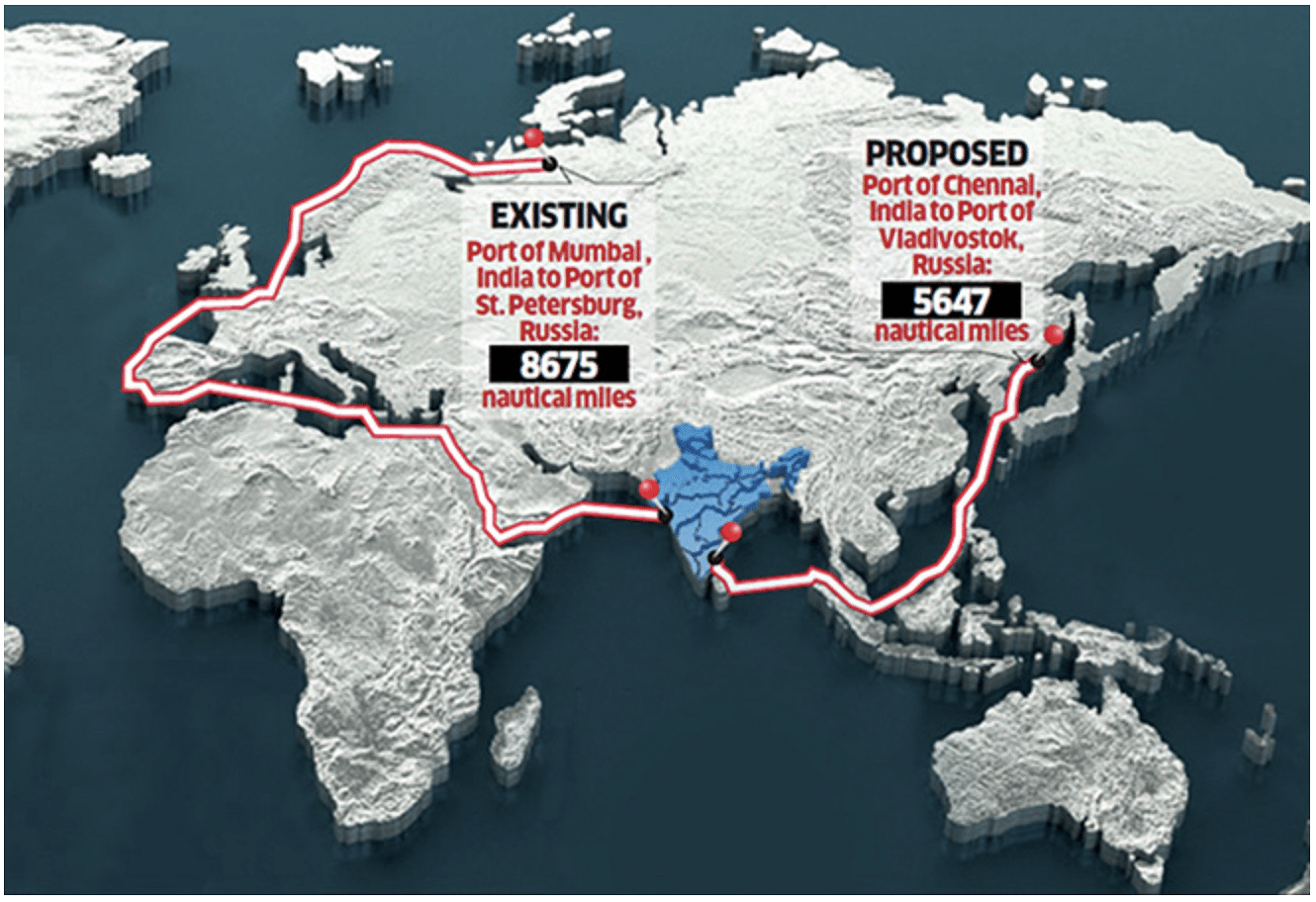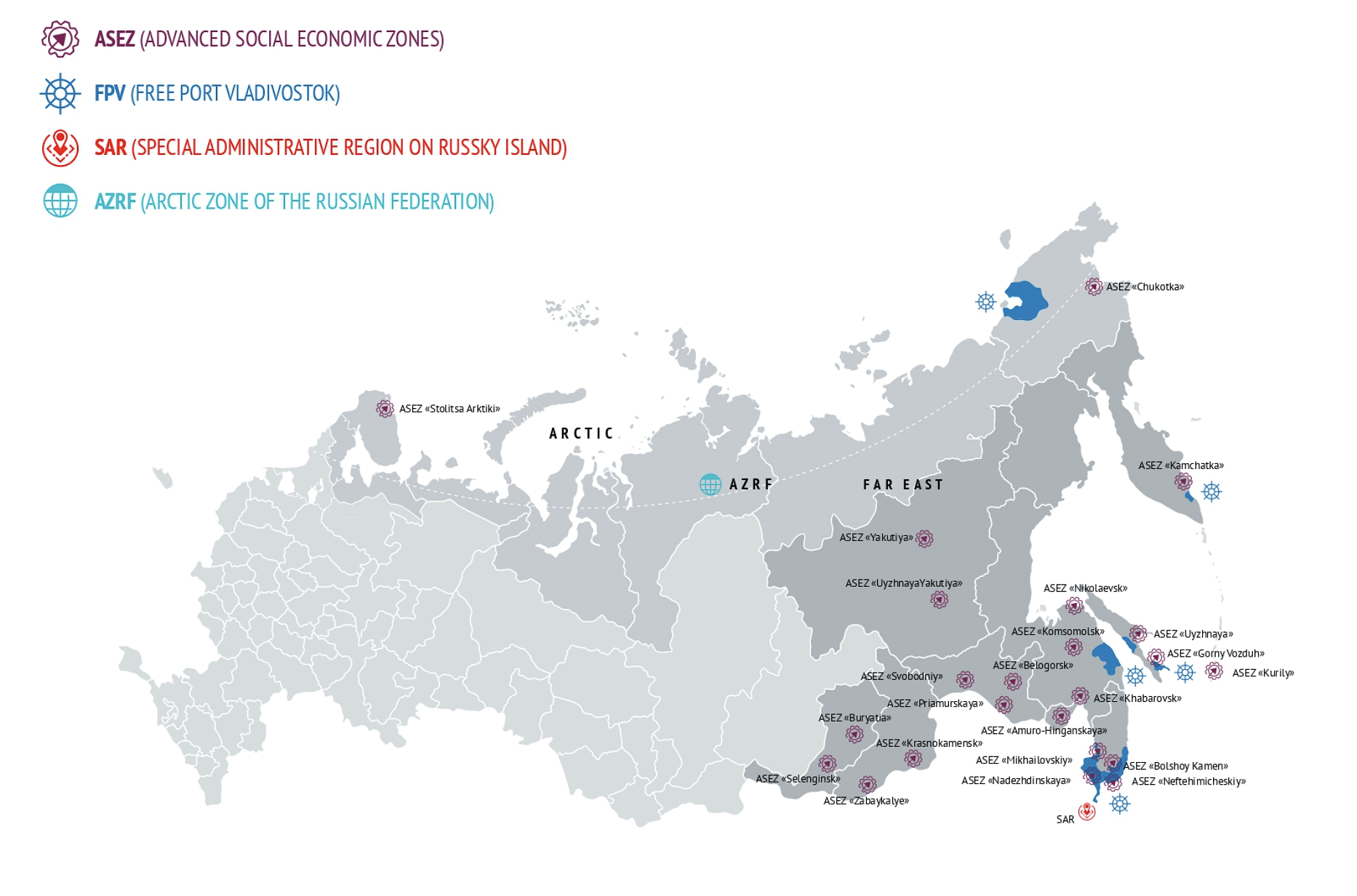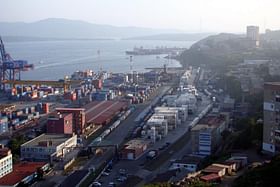This sea route covers a distance of approximately 5,647 nautical miles and will bring down transport time to 12 days, almost a third of what is taken under the existing popular route from St. Petersburg to Mumbai.
India and Russia have scheduled a stakeholder meeting in September to work out the details for operationalising the Chennai-Vladivostok maritime route, the Businessline reported on Monday (26 June).
The Chennai-Vladivostok Maritime route connects Chennai on India’s east coast with Vladivostok, Russia’s eastern port city, opening a plethora of opportunities for trade and investment for both countries.
“Talks are on to operationalise the Vladivostok-Chennai maritime route. Russian officials came to India to carry out a feasibility exercise in May. And we (Indian officials) have gone there some months back to check out the infrastructure and other facilities there. A stakeholder meeting is planned in September,” Union Minister for Ports, Shipping and Waterways Sarbananda Sonowal told Businessline during an interview.
Vladivostok is the end point of the Trans-Siberian Railway, the fourth in terms of cargo turnover, and the first free seaport of the Far East.
History
The Chennai-Vladivostok maritime link, which is being considered for revival is not a new phenomenon — it did operate for a few years during the Soviet period.
“It was very much operational between 1967 and 1969 by the shipping company FESCO; and the shipment took nearly 90 days given the shipping technology at work then following the maritime route Nakhodka, Hong Kong, Singapore, Calcutta, and Madras,” writes Dr Jajati K Pattnaik who teaches at the School of International Studies, Jawaharlal Nehru University,
The Chennai-Vladivostok maritime connectivity was first crystallised at the policy level during the visit of Prime Minister Narendra Modi to Vladivostok in 2019 to attend both the Eastern Economic Forum (EEF) and the annual Indo-Russia bilateral summit.
It was during this visit that the two sides signed a Memorandum of Intent (MoI) on the Development of Maritime Communications between the Port of Chennai and the Port of Vladivostok.
Existing Trade Route
The lack of connectivity is often cited as one of the reasons for limited trade between India and Russia, which has for the past few years hovered around the US $12-13 billion level.
At present, the two countries are linked through the traditional European route which passes through Red Sea, Mediterranean Sea and Baltic Sea.
Operationalised in 2000, the circuitous route spans from the Nhava Sheva Port in Mumbai to the Port of St. Petersburg in Russia and goods take an average of 40 days to cover the distance of 8,675 nautical miles or about 16,000 km.

The announcement of the Chennai-Vladivostok maritime corridor is part of the vision to address the current lack of connectivity between India and Russia.
Saving On Time and Distance
The Vladivostok-Chennai route passes through the Sea of Japan past the Korean peninsula, Taiwan and the Philippines in the South China Sea, past Singapore and through the Strait of Malacca, to emerge into the Bay of Bengal and then cuts across through the Andaman and Nicobar archipelago to Chennai.
This sea route covers a distance of approximately 5,647 nautical miles or about 10,500 km and will bring down transport time to 12 days, almost a third of what is taken under the existing popular route from St. Petersburg to Mumbai.
At the same time, costs are expected to experience a substantial decrease, by 30-odd per cent.
Potential
A recent study carried out by Chennai Port found out that while coking or metallurgical coal, crude oil and Liquified Natural Gas (LNG) are some of the cargo that can be exported from Russia, shipments from India could include construction equipment, construction materials, pharma, among others.
Further, the new route would also give India the largest presence in the South East Asian region. The strategic location of Chennai Port on the Bay of Bengal makes it an ideal gateway for trade with Southeast Asian countries like Thailand, Vietnam, and Indonesia.
Similarly, the Port of Vladivostok in Russia provides access to the resource-rich Far East region, offering immense opportunities for Indian businesses to tap into the market sectors like energy, mining, and technology.

The Far East is the easternmost part of Russia. The macro-region borders two oceans, the Pacific and the Arctic, and five countries — China, Japan, Mongolia, the United States and the DPRK.
Located on the Golden Horn Bay north of North Korea and a short distance from Russia’s border with China, the region extracts 98 per cent of Russian diamonds, 50 per cent of Gold, 14 per cent of Tungsten, and 40 per cent of fish and seafood and has about one-third of Russia’s coal reserves.
The Agenda
The study by Chennai Port has also made some recommendations on the steps needed to make the project a reality.
One of the primary suggestions is the improvement and possible re-laying of approach roads to Vladivostok Port. Also, there are some issues with the draft at Vladivostok port that needs to be taken care.
“Whether we will need further investments, and what are the issues that needs to be taken care of from both sides, will be taken up in the September meeting,” Sonowal added.


